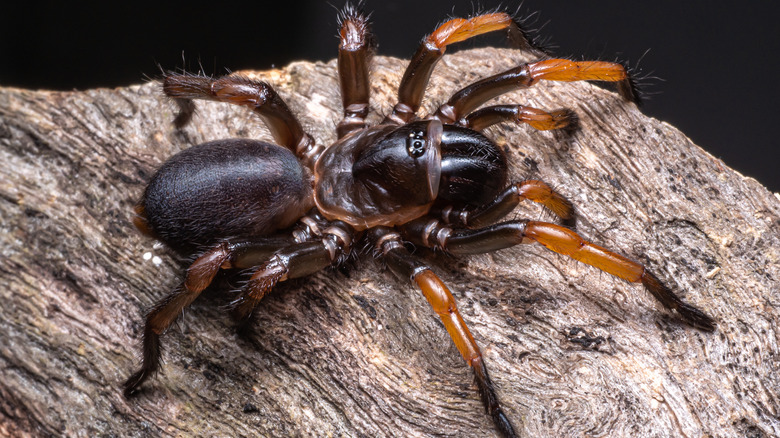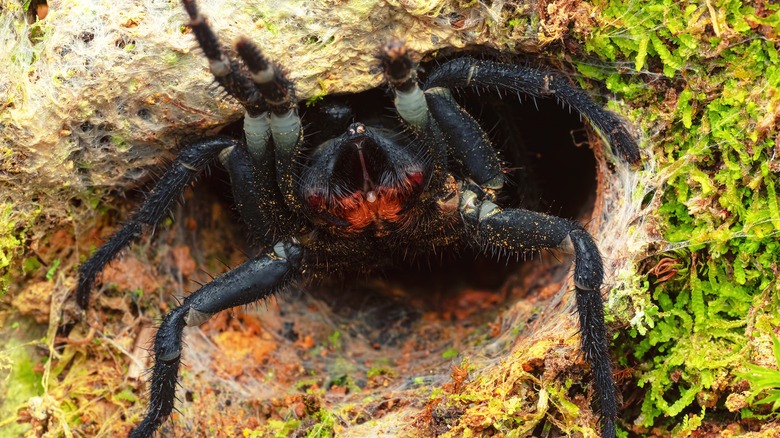This Fossilized Spider From Australia Is Pure Nightmare Fuel
It's totally normal to be afraid of spiders, and some people are diagnosed with arachnophobia when that fear interferes with their daily lives. No matter where your level of fear lies, it's totally understandable if you're afraid to sleep because of the discovery of a giant, fossilized spider in Australia. Scientists led by paleontologist Dr. Matthew McCurry found the fossil in June 2020 at McGraths Flat, a newly documented fossil site in New South Wales that has been dated to the Miocene epoch. In the Zoological Journal of Linnean Society published in September 2023, the authors revealed the official name for the specimen: Megamonodontium mccluskyi, after Simon McClusky who found it.
Estimated to be 11 to 16 million years old, the fossil is split through the body wall, showing what the specimen looked like from the inside. Despite that, the scientists can tell that it had "truncated-looking tarsi ... [and] fluted ridges on setae on the legs" similar to the Barychelidae family (brush-footed trapdoor spiders), specifically the Monodontium genus. Although the body length is relatively short at just under 1 inch, it's five times bigger than its average current-day relative.
Dr. McCurry noted that the find is significant because only four fossils of spiders have ever been found in Australia. Meanwhile, supervising author and arachnologist Dr. Robert Raven said that Megamonodontium mccluskyi is the largest spider fossil discovered in the country and the first from the Barychelidae family uncovered worldwide. The authors also noted that it's the second-biggest fossil spider ever found.
Australia is no stranger to large and unique spiders
It's no surprise that such a large spider fossil was found in Australia because the country is known for having some terrifying-looking arachnids. While there are 10 genera of brush-footed trapdoor spiders, those are still smaller than other common big spiders.
One of the largest is the whistling spider or Australian tarantula, which goes by several names: barking spider, bird-eating tarantula, and Queensland whistling tarantula, which refer to the sounds they can make with their limbs and jaws. The body length can range from 0.8 to 4.3 inches, and their legs make them look twice that at up to 7.8 inches.
More common than the whistling spider, the huntsman spider in Australia is also known as the giant crab spider. The name comes from its behavior of chasing down its prey rather than waiting for it to get caught in a web like many other spiders. On average, males measure 0.6 inches, while females measure 0.8 inches. The legs make them look much bigger, though — up to 5.9 inches.

